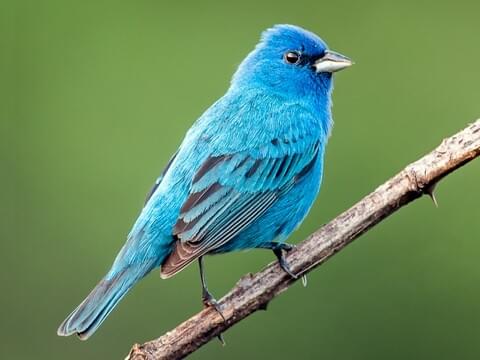Climate Change and Birds

Birds, among many other animals, are attempting to adapt to climate change by becoming smaller:
One fall morning in 1978, David Willard, an ornithologist at the Field Museum in Chicago, walked to the nearby McCormick Place convention center — a hulking structure along Lake Michigan — to look for dead birds. He’d received a tip that birds were crashing into the building’s many windows on their journey south.
He found a few birds lifeless on the concrete that morning. And as any good scientist might do, he brought them back to the museum to measure them and store the winged creatures in the museum’s collection. His curiosity piqued, he returned to McCormick Place the next morning. He found still more birds and brought them, too, back to the museum.
Four decades later, Willard has helped collect more than 100,000 birds from window collisions in Chicago, with help from other scientists and volunteers. They now make up a stunning 20 percent of the museum’s ornithology collection.
While these birds represent a tragic loss of life, they’ve also helped reveal fascinating insights into how wildlife is changing. One especially striking finding from the collection is that these birds have been shrinking — and rising global temperatures are likely to blame, according to a 2019 analysis of Willard’s measurements.
It’s not just birds. A growing body of research suggests that global warming is messing with the body sizes of all kinds of creatures, from cold-blooded frogs to warm-bodied mammals, and often making animals smaller.
Wild animals are already facing a wide range of threats. If they shrink — and especially if they shrink at different rates, as researchers predict — that could push some species even closer to extinction. And it could throw a wrench into ecosystems that humans rely on.
…
In 2019, when scientists examined more than 70,000 bird specimens in the Field Museum collection, they found that individuals from 52 bird species shrank by an average of 2.6 percent between 1978 and 2016. A part of the birds’ legs, known as the tarsus, also got smaller, on average.
“We had no idea until two years ago that 52 of the most common, well-known species of North American bird have all gotten smaller over the last 40 years,” said Brian Weeks, the lead author of the study and an assistant professor of ecology and evolution at the University of Michigan. “It has big implications for what’s going to happen in the future.”
Other studies on birds, deer, rodents, insects, and fish show similar patterns. Research in 2017, for example, found that the body size of a small, silver fish called menhaden, which is widely used for animal feed and bait, has shrunk on average by 15 percent over the last 65 years — most likely due to warming. “As the Earth’s atmosphere and oceans continue to warm, the future of menhaden, it seems, will be even smaller,” said R. Eugene Turner, the author of the study and a professor at Louisiana State University.
What’s interesting is that fish and other so-called ectotherms don’t generate their own heat, so having a smaller body doesn’t help them stay cool. Instead, they might shrink in response to warming for other reasons, said Jennifer Sheridan, assistant curator for amphibians and reptiles at Carnegie Museum of Natural History and the lead author of the 2011 perspective. Warm temperatures, for example, speed up the development phases of frogs, from egg to tadpole and so on, but their rate of growth doesn’t keep up, she said. As a result, they’re smaller by the time they arrive at adulthood.
Whether this helps the 90% of species on the planet likely headed to extinction in the next couple hundred years or not, I do not know. Kind of skeptical though.


